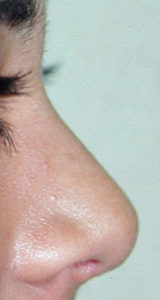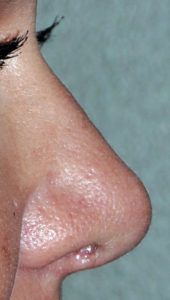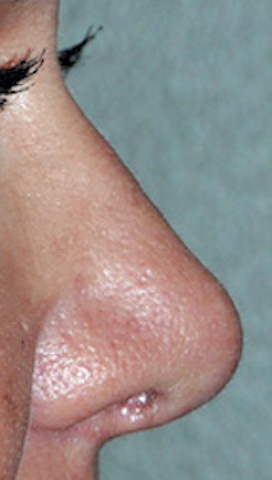
Strategies during a primary rhinoplasty to prevent postoperative supratip fullness include an adequate cartilage resection of the septum angle/nasal dorsum. In looking at the dorsum and tip relationship in surgery it is important to be aware that any skin coverage will camouflage the transition. As a result I have learned that the dorsal-tip relationship must look a bit exaggerated, particularly in females patients, to avoid the problem of residual supra tip fullness.
In the June 2019 issue of the journal Plastic and Reconstructive Surgery an article was published entitled ‘How to Reduce the Probability of a Pollybeak Deformity after Primary Rhinoplasty: A Single-Center Experience’. In this paper the authors discuss two intraoperative maneuvers in high risk patients, supratip suturing and supratip skin excision. The authors review their experience in 74 patients with the supratip suture technique and 21 patients treated by supratip skin excision. They use a 5-0 Vicryl placed using a cannula technique to sew down the dermis of the skin to the cartilage in the depth of the supratip area. When supratip skin seems excessive after closure an elliptical skin excision is performed in the midline just behind the tip-defining point.
Their results in the 74 cases of supratip suturing showed improvement in every patient with two actually having an overcorrection effect. Of the 21 patients who had supratip skin excision, 2 (10%) had adverse scarring which required secondary scar treatments.

Dr. Barry Eppley
Indianapolis, Indiana




